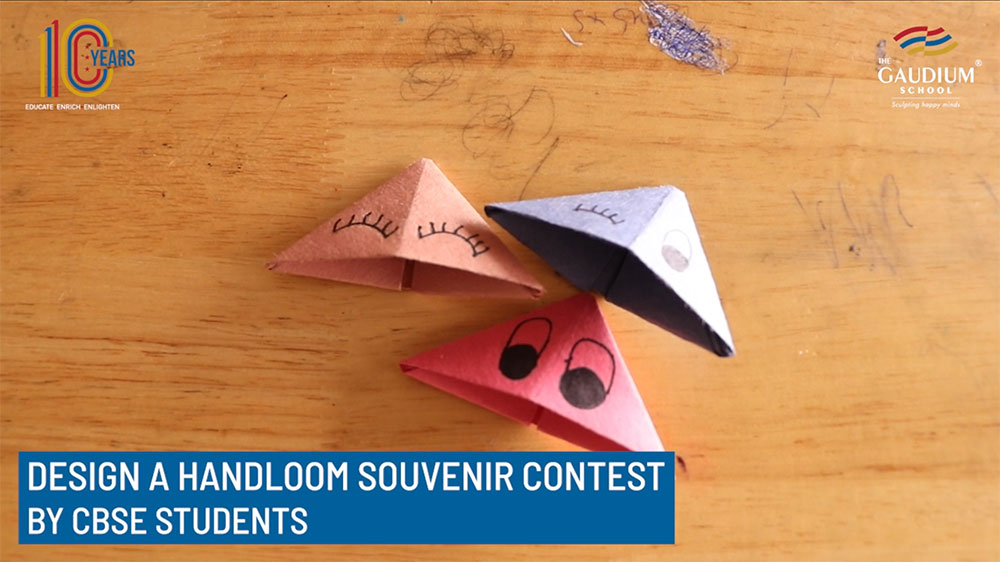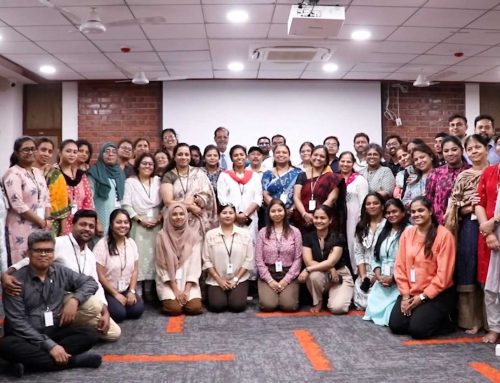Learning Objectives:
- To cultivate appreciation for India’s textile heritage and traditional craftsmanship
- To develop hands-on skills in basic weaving techniques and pattern creation
- To understand the socio-economic importance of the handloom sector
- To promote sustainable and eco-friendly textile production methods
- To enhance collaborative learning and creative expression
During National Handloom Week, the Grade 6 to 8 students of The Gaudium School actively engaged in a hands-on exploration of India’s rich textile heritage. The event, centered on handlooms, was designed to help students appreciate the artistry and cultural significance of traditional weaving techniques. Through interactive workshops and practical sessions, students discovered the intricate relationship between mathematics, design, and textile creation. The students worked collaboratively with handlooms to craft unique souvenirs, blending creativity with craftsmanship. This experiential learning approach helped them understand the precision and patience required in traditional weaving.
The activities showcased the vibrant colors and intricate designs characteristic of Indian textiles. Under the guidance of experienced mentors, including local artisans who shared their generational knowledge, students learned about the various stages of weaving, from arranging threads on the loom to weaving patterns. They explored different weaving techniques, thread counting, and pattern creation, incorporating elements of geometry and design thinking. The process not only honed their artistic skills but also fostered teamwork and patience. Students learned to appreciate the time and effort involved in creating handloom textiles, gaining insights into why these traditional crafts deserve preservation and support.
The event was an excellent opportunity for students to connect with India’s cultural roots while developing an understanding of sustainable craftsmanship. Through their creations, the students demonstrated a perfect blend of traditional techniques and modern creativity, making the event a memorable celebration of India’s handloom heritage. The initiative also raised awareness about the environmental benefits of handloom production and its role in supporting rural economies. Students gained perspective on how traditional crafts can be relevant in contemporary contexts and the importance of preserving these cultural practices for future generations.
Impact and Outcomes:
- Enhanced understanding of India’s textile heritage and traditional craftsmanship
- Developed practical skills in basic weaving techniques
- Increased awareness of sustainable fashion and eco-friendly production methods
- Improved collaborative working abilities and patience through group activities
- Greater appreciation for the economic and cultural value of handloom sectors
- Created a bridge between traditional crafts and modern education
- Fostered cultural pride and awareness among students
The successful implementation of this program demonstrates how traditional crafts can be effectively integrated into modern education, creating meaningful learning experiences that connect students with their cultural heritage while developing practical skills and environmental awareness.






Leave A Comment